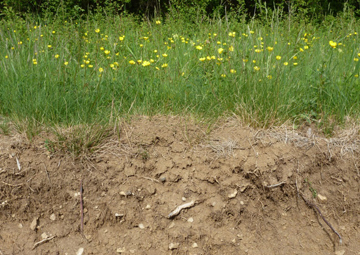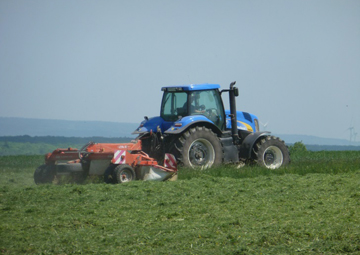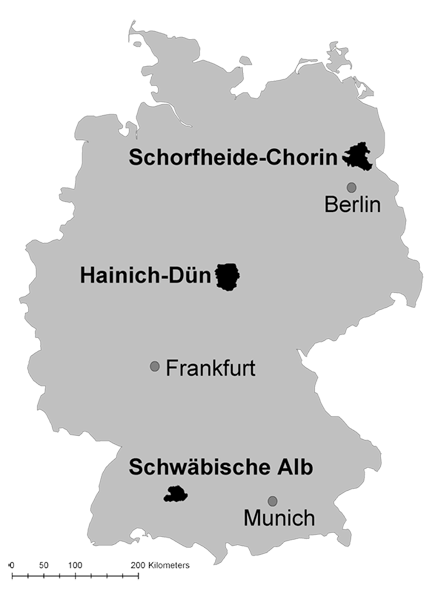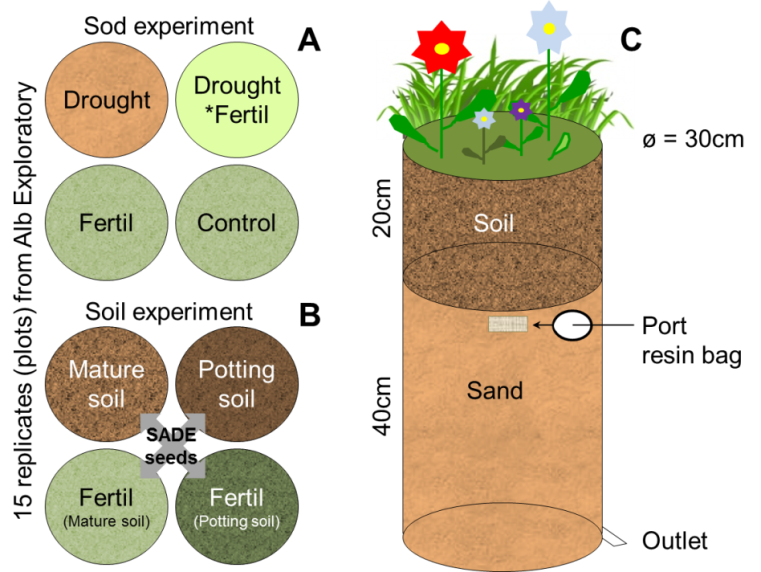
Nutrient-poor grassland on calcareous soil covered by a loess layer in the NP Hainich. (photo: Valentin H. Klaus) Project
ESCAPE: Effects of disturbance and seed addition on plant community assembly and ecosystem functions
Experiments controlling plant diversity have often demonstrated positive relations between the number of plant species and ecosystems functions such as productivity, biomass quality, nutrient cycling, temporal stability and resistance against perturbations and invasions. Yet, there is an ongoing debate how these findings from rather artificial and strongly controlled experiments scale up to real-world ecosystems. In our project, we will specifically address the effects of land-use intensity, pre-disturbance plant diversity, soil seed banks and assisted migration through seed addition on ecosystem resilience after heavy disturbance. A particular focus will be given to the impact of persistent soil banks as a hidden part of local diversity and introduced seeds on community reassembly and the recovery of ecosystem functioning.

Mowing of grasslands in the Hainich in June. (photo: Valentin H. Klaus) In the combined full-factorial disturbance-seed addition experiment SADE we will specifically ask the question how assisted migration by sowing and heavy soil disturbance affect community reassembly and essential ecosystem functions along a real world land-use gradient. A particular emphasis will be given to the resilience of community structure and productivity-related ecosystem functioning. In a complementary mesocosm experiment with grassland sods we will test if and how plant diversity modifies effects of experimental fertilizing and drought on ecosystem functions such as nutrient cycling. Specifically we will address the following hypotheses:
- The seed and bud bank of the grasslands has a crucial importance for community reassembly after a drastic disturbance event.
- At disturbed sites, subordinate and transient species emerging from the seed and bud bank will (temporarily) play a prominent role for ecosystem functioning.
- In species-rich grasslands, diversity and ecosystem function will recover more quickly after disturbance to the original level due to higher propagule pressure from seed rain and the permanent soil seed bank.
- Species enrichment by seed addition will enhance ecosystem functions such as biomass production, fodder quality, drought resistance and completeness of nutrient uptake, at least in previously species-poor grasslands.
- Plant diversity will positively affect nutrient retention due to reduced losses to the groundwater or deeper soil layers and buffers drought effects on nutrient cycling and productivity.
Project duration and funding
- Project duration: 04/2014 - 03/2017
- This poject is funded by the German Research Foundation (DFG) as part of the Biodiversity Exploratories

Exploratories
Background: The Biodiversity Exploratories
The Biodiversity Exploratories for Functional Biodiversity Research or Biodiversity Exploratories are a German Science Foundation (DFG) funded research project with more than 30 collaborating research institutions.
Biodiversity and ecosystem research will be merged at a large scale and with a long-term perspective in three different regions in Germany: The Exploratories in the UNESCO Biosphere Reserve Schorfheide-Chorin in Brandenburg, National Park Hainich and surroundings in Thuringia and the UNESCO Biosphere Reserve Schwäbische Alb in Baden-Württemberg.
The multidimensionally oriented project, focusing on an ample network of grassland and forest areas and covering a whole range of management forms and intensities in the three regions, targets to assess the impact of land use on different components of biodiversity. By using a combined approach of georeferenced data collection based on observation, experimentation and modelling, the Exploratories aim at gaining causal insight into interactions and interrelations between land use, biodiversity, ecosystem functioning and processes.
-
Methods
Methoden
Our project will analyse seed and bud banks on all 75 plots in the three study regions where the SADE experiment is implemented to estimate the importance of (hidden) plant diversity for community reassembly after a disturbance event. As major response variables for recovery of ecosystem functioning we will analyse productivity and nutrient stocks in aboveground biomass, including 15N and 13C isotopic signals as proxies for nitrogen uptake and drought resistance. Furthermore, mineralization rates of N and P in the soil using resin bags across all plots will help to assess nutrient availability and excess in relation to the diversity and land-use gradient.
Interactive effects of plant diversity, drought stress and fertilization on nutrient cycling and productivity will be specifically addressed in a controlled mesocosm experiment aiming at the disentangling of confounding effects and the identification of key mechanisms.

Mesocosmen experiment using grass sods with different treatments of drought and fertilization. (graphic: Till Kleinebecker & Valentin H. Klaus)
ESCAPE
Effects of disturbance and seed addition on plant community assembly and ecosystem functions


